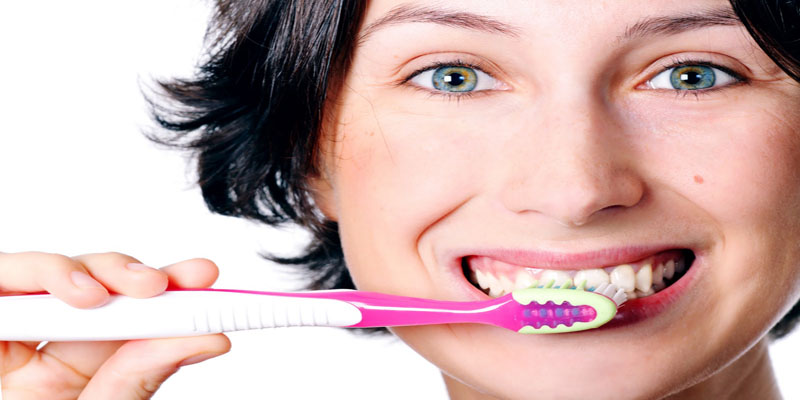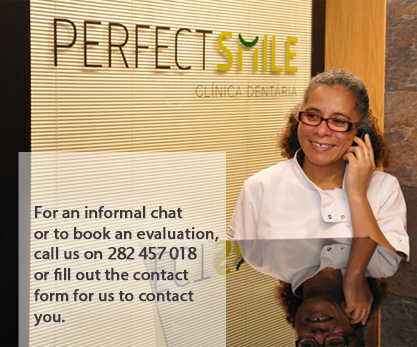 Oral Hygiene Routines...
Oral Hygiene Routines...
Interdental cleaning should be done one or two times per day with emphasis on the evening. Patients should use the interdental devices before tooth brushing. When plaque is removed from the proximal surfaces first, the fluoride in toothpaste may reach the proximal surfaces, helping prevent dental caries. In patients who have normal healthy gums and the teeth are in contact, dental floss is the most effective tool for removing plaque from the proximal surfaces. Patients with moderate to severe periodontal diseases often have recession that results in larger interdental areas with little or no interproximal papilla and exposed concave root surfaces. These areas often cannot be thoroughly cleaned with dental floss. Patients with restorations may also require alternatives to floss due to their inability to properly man oeuvre the floss and/or lack of patience. Because of the benefit of interdental plaque removal and the lack of patient compliance with daily flossing, alternative methods to flossing are important.
Step 1: interdental cleaning.
Proper Flossing
Flossing is an essential part of the tooth-cleaning process because it removes plaque from between teeth and at the gum line, where periodontal disease often begins. Generally, we like our patients to use the widest diameter floss that will fit between your teeth without shredding. Oral B makes excellent flosses. Some of our patients like Oral B- Ultra, because it is capable of removing a lot of plaque.
If you find using floss awkward or difficult, ask your dental hygienist about the variety of dental floss holders or interdental cleaning devices that are available.
 |
Wind 18" of floss around middle fingers of each hand. Pinch floss between thumbs and index fingers, leaving a 1"- 2" length in between. Use thumbs to direct floss between upper teeth. |
.jpg) |
Keep a 1" - 2" length of floss taut between fingers. Use index fingers to guide floss between contacts of the lower teeth. |
.jpg) |
Gently guide floss between the teeth by using a zigzag motion. DO NOT SNAP FLOSS BETWEEN YOUR TEETH. Contour floss around the side of the tooth. |
.jpg) |
Slide floss up and down against the tooth surface and under the gum line. Floss each tooth thoroughly with a clean section of floss. |
Interdental Brushes: Interdental brushes are the most common alternatives to dental floss and can be very effective in bacterial plaque removal and in reducing gingival inflammation in embrasures with little or no interproximal papilla or in exposed furcation areas. In general, interdental brushes have nylon fibres attached to a wire that is then mounted on various types of plastic handles.
Sticks and Picks: Wooden and plastic sticks can also be used as an aid to reduce plaque in the inter-dental areas. These devices are made of balsa, bass, birch, or linden wood or plastic. Some of the wood sticks are treated with xylitol. Wood sticks are triangular in shape and come in varying sizes. Plastic sticks are smaller in size and have varying shapes. Both the wood and plastic are used only in areas that do not have gingiva filling the interproximal space. They are inserted in the interproximal space with the flat surface, the base of the triangle, resting on the gingival margin. The stick is moved in and out from buccal to lingual using short strokes. Wood sticks should be discarded if they splinter.
Superfloss and Floss Threaders: These specialized floss aids are used for thorough cleaning and plaque removal under bridges and large interproximal spaces (large spaces in between your teeth). It is also used under orthodontic appliances and wires.
Floss handle: If you lack dexterity, try a floss handle to facilitate the use of dental floss. Hint- The floss must be mounted on the handle very tightly for it to work without shredding.
Step 2: Proper Brushing.
Proper brushing is essential for cleaning teeth and gums effectively. Use a toothbrush with soft, nylon, round-ended bristles that will not scratch and irritate teeth or damage gums.
 |
Place bristles along the gum line at a 45-degree angle. Bristles should contact both the tooth surface and the gum line. |
.jpg) |
Gently brush the outer tooth surfaces of 2-3 teeth using a vibrating back & forth rolling motion. Move brush to the next group of 2-3 teeth and repeat. |
.jpg) |
Maintain a 45-degree angle with bristles contacting the tooth surface and gum line. Gently brush using back, forth, and rolling motion along all of the inner tooth surfaces. |
.jpg) |
Tilt brush vertically behind the front teeth. Make several up & down strokes using the front half of the brush. |
.jpg) |
Place the brush against the biting surface of the teeth & use a gentle back & forth scrubbing motion. Brush the tongue from back to front to remove odor-producing bacteria. |
Remember to replace your toothbrush every three to four months. Researchers have established that thousands of microbes grow on toothbrush bristles and handles. Most are harmless, but others can cause colds and flu viruses, the herpes virus that causes cold sores, and bacteria that can cause periodontal infections.
Toothbrushes:
As a general rule, a tooth brush has to fit. That is you need to select a brush head which is not too large for the space it must clean, a handle which is long enough to reach the area to be cleaned, and bristles that are efficient and soft.
We place all of our patients on soft bristle brushes. Hard or medium are too abrasive and if used improperly with too much force, they will cause the gums to recede from this abrasion.
Another specialty brush which is very helpful is the unitufted brushes, which are very good for cleaning around crowns, for the inside of the lower back teeth and the back sides of the last molars in your mouth.
Electric toothbrushes can be very helpful, especially to those with dexterity limitations or simply want the convenience of letting a device do the work. We recommend the Oral B-Braun Plaque Remover.
Tooth Pastes
Selection of a tooth paste should depend primarily on what you want the product to do. Do not try the shotgun approach by selecting one which tries to do everything.
• For bad breath--
Get a paste with chlorhexadine. We recommend Periogard. The best results are obtained when you use it with the Perioigard rinse. This is important fact: you must also use a tongue scraper to clean your tongue since your tongue generates most of the compounds responsible for breath problems.• For Periodontal Disease and Gingivitis--
Use an anti-bacterial chlorhexadine tooth paste. Ask our clinical staff as to which tooth paste is recommended for your condition.
Step 3: Tongue cleaning.
Tongue Scrapers: Do not overlook this important part of the oral hygiene regimen. If you examine the top of the tongue, you will notice a rough, velvety character. It may even have a grayish or whitish coating. This surface of the tongue is a haven for plaque. You'll be amazed at how much material comes off of your tongue when you use a tongue scraper. It is also an essential step if you are trying to improve your breath freshness. Tongue scrapers are often hard to find.
Step 4: Mouth rinsing.
Rinses:
Rinsing after you've brushed and flossed is an integral part of your oral hygiene regimen.
• Topical Fluoride Application: Topical Fluoride Application allows the teeth to feel smooth which stops the bacteria and plaque from adhering onto the teeth. Following the application of the fluoride, please do not rinse/ drink or eat anything for 1/2 hour.
• Anti microbial rinse: 1. chlorhexidine (Hextril or Periogard) which is only available by prescription, 2. phenolics-alchol combinations (Listerine or its' generic equivalents), 3. chlorine dioxide rinses (Oxyfresh). and 4. quartenary ammonium-alcohol combination (Cepacol or Scope)
Oral Irrigation:
These devices utilize an electric pump to jet water, or water and rinse combinations, between the teeth and slightly under the gums. They are particularly helpful to patients who are poor flossers by choice or have dexterity limitations, those who have cemented bridgework with limited access to floss, and those with braces. Using an irrigator, with a dilution of an anti microbial rinse in the reservoir, will help patient having gingivitis. This improvement was seen as evidenced by less bleeding and inflammation present in the gums and the greatest improvements were seen in patients with inadequate flossing habits.
Fluoride Gel:
Fluoride is used to prevent occurrence of cavities and reduce sensitivity. New research studies have determined that daily use of fluoride will decrease the production of plaque and harmful bacteria that causes periodontal disease. After massaging your gums and brushing your teeth, rinse the toothbrush and dry the brush slightly. Place a single strip of gel on your toothbrush and brush the gel on each area of each tooth in your mouth - be very thorough. DO NOT SWALLOW and spit the excess out. Do not rinse and do not eat or drink anything for at least 30 minutes. The best time to use fluoride gel is right before bedtime.











